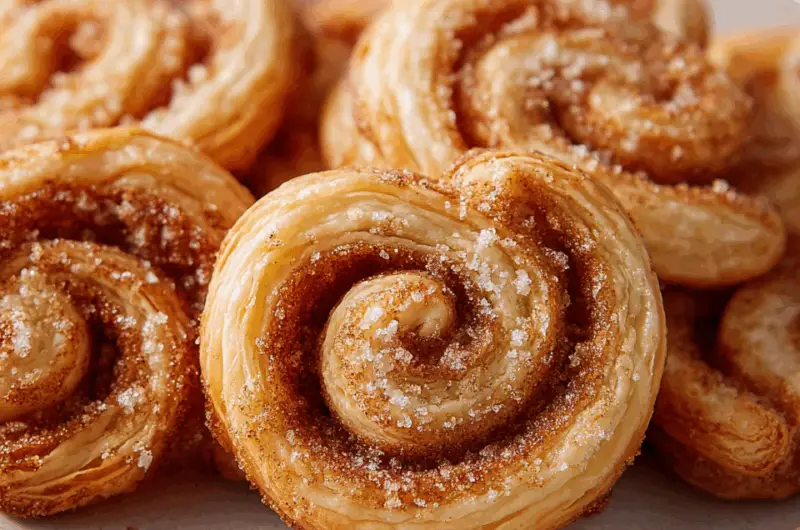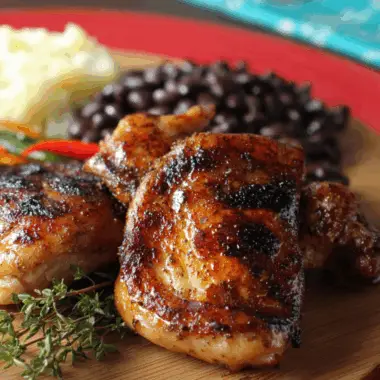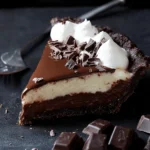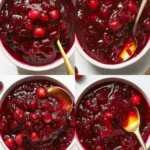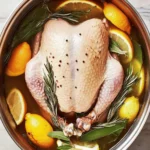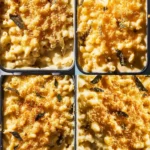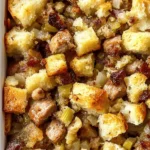Cinnamon Palmiers are a beautiful marriage of elegance and ease. Made with store-bought puff pastry and a blend of cinnamon and sugar, these flaky spirals puff up to golden perfection in under 15 minutes. The hint of cardamom adds a warm, aromatic note that elevates these simple cookies into something truly special.
Perfect for tea time, brunch, or holiday dessert tables, Cinnamon Palmiers are a stunning addition to your baking repertoire. With minimal ingredients and maximum flavor, this recipe transforms humble pantry staples into an eye-catching treat that looks like it came straight from a Parisian bakery.
Full Recipe:
-
1 sheet frozen puff pastry, thawed
-
1/3 cup white sugar
-
1/4 cup white sugar (for work surface)
-
1 teaspoon ground cinnamon
-
1/8 teaspoon ground cardamom (optional, for aromatic flavor)
-
2 tablespoons melted unsalted butter
Directions:
-
Preheat oven to 375°F (190°C). Line a baking sheet with parchment paper.
-
Mix 1/3 cup sugar, cinnamon, and cardamom in a small bowl.
-
Sprinkle 1/4 cup sugar evenly over your work surface. Unfold the thawed puff pastry and place it on the sugar.
-
Roll the pastry out gently into a 10×15-inch rectangle.
-
Brush the top with melted butter and evenly sprinkle with the cinnamon-sugar mixture.
-
Starting from one long side, tightly roll the pastry toward the center. Repeat from the other side so the two rolls meet in the middle.
-
Wet your finger and dab along the touching edge to help seal the rolls together.
-
Refrigerate the rolled pastry for 5–10 minutes to firm up.
-
Slice into 1/4-inch thick pieces and place them 1 inch apart on the prepared baking sheet.
-
Bake for 12 minutes or until golden brown and crisp. Let them cool on the baking sheet for a couple of minutes before transferring to a wire rack.
Prep Time: 10 minutes | Cooking Time: 12 minutes | Total Time: 22 minutes
Kcal: 120 kcal | Servings: 20 cookies
Introduction to Cinnamon Palmiers
Cinnamon Palmiers are an irresistible pastry delicacy that combines crisp, buttery layers with the warm, comforting aroma of cinnamon and sugar. Often seen in bakeries across Europe and North America, these cookies are deceptively simple in preparation, yet elegant in presentation. Their unique shape—resembling hearts, elephant ears, or palm leaves—is what gives them their name: “palmiers” is the French word for palm trees.
Using store-bought puff pastry makes this an approachable recipe for home bakers of all skill levels. In under 30 minutes, you can create a tray of professional-looking treats that pair wonderfully with coffee, tea, or as a light dessert after dinner. But beyond their aesthetic and ease, there’s a rich history and culinary magic behind Cinnamon Palmiers that makes them worth exploring.
Origins and Cultural Background
The Palmier traces its roots to early 20th-century France, where puff pastry (or pâte feuilletée) became a cornerstone of pastry cuisine. Though puff pastry had been around since the 17th century, the idea of folding it into tight spirals dusted with sugar and spices came much later. The design mimics the curving shape of palm fronds, giving it an organic, artistic feel.
Cinnamon, on the other hand, dates back even further. Once considered more valuable than gold, cinnamon has been used in sweet and savory recipes around the globe for centuries. Combining the French art of pastry-making with the earthy sweetness of cinnamon results in a cookie that is globally appealing—familiar, nostalgic, and sophisticated all at once.
Why Puff Pastry Makes a Difference
The use of puff pastry in palmiers is critical to their texture and appeal. Puff pastry is made through a lamination process, which involves folding butter into dough multiple times to create hundreds of thin layers. When baked, the water in the butter turns to steam, forcing the layers apart and resulting in a light, flaky texture.
In Cinnamon Palmiers, this lamination works perfectly with the added butter and sugar. The sugar caramelizes on the surface and edges, while the butter melts into the pastry, giving each bite a toffee-like crunch and melt-in-the-mouth feel. It’s a scientific marvel and a sensory delight all rolled into one.
Flavor Profile and Texture
The flavor of Cinnamon Palmiers is warm, sweet, and buttery with subtle hints of spice. While cinnamon takes center stage, a touch of cardamom (used optionally in many recipes) adds an exotic note that elevates the cookie’s complexity. The contrast between the crisp outer layer and the delicate inner spirals creates a dynamic texture: crunchy on the outside, soft and airy in the middle.
This duality makes palmiers not just a cookie, but an experience. The caramelized sugar adds a slight chewiness, and the buttery layers flake in your mouth with each bite. It’s the kind of treat you could easily eat several of without realizing it—and that’s part of their charm.
Creative Variations
While the cinnamon version is a classic, palmiers are endlessly adaptable. Here are a few delightful variations that can be made using the same basic technique:
-
Savory Palmiers: Replace sugar with pesto, grated Parmesan, or tapenade for a delicious appetizer or cocktail snack.
-
Nutty Delight: Add finely chopped pecans, walnuts, or almonds to the cinnamon-sugar mixture for a crunchy twist.
-
Chocolate-Dipped: Once cooled, dip one side of the palmiers in melted dark or white chocolate for added indulgence.
-
Fruit-Filled: Add a thin layer of jam—like raspberry or apricot—before rolling the pastry.
-
Maple Sugar Glaze: Substitute white sugar with maple sugar and brush the finished pastries with a maple glaze.
These options not only introduce new flavors but also make the recipe adaptable for different occasions, from brunch to dessert to party platters.
Serving Suggestions and Pairings
Cinnamon Palmiers are incredibly versatile when it comes to presentation and serving. They can be served warm or at room temperature and are often enjoyed as:
-
An elegant tea-time snack: Serve with Earl Grey, chai, or a delicate green tea.
-
A coffee companion: Ideal with espresso, cappuccino, or even a vanilla latte.
-
A festive holiday treat: Add them to cookie tins, dessert buffets, or as a garnish to plated desserts.
-
An easy brunch pastry: Place them alongside muffins and scones for a balanced breakfast pastry tray.
Because of their aesthetic appeal, palmiers also make wonderful gifts. Wrapped in cellophane bags with ribbon or boxed in bakery-style packaging, they are a thoughtful homemade gift for hosts, teachers, or loved ones during the holidays.
Baking Tips for Success
To ensure your Cinnamon Palmiers turn out as crispy and caramelized as the ones from a bakery, consider these expert tips:
-
Work with cold pastry: If the dough gets too warm, it becomes sticky and harder to slice cleanly. Chill before cutting.
-
Use a sharp knife: A clean, sharp blade will help retain the iconic swirl shape when slicing.
-
Don’t overcrowd the pan: The sugar will caramelize and spread slightly, so allow enough space between each piece.
-
Watch the bake time: Since sugar can burn quickly, keep a close eye toward the end of the baking time for that perfect golden hue.
Storage and Shelf Life
One of the benefits of palmiers is their longevity. Once completely cooled, they can be stored in an airtight container at room temperature for up to five days without losing their crispness. For longer storage, they can be frozen in a single layer and then reheated briefly in the oven to refresh their texture.
You can also freeze the unbaked, sliced dough and bake directly from frozen, just adding a few extra minutes to the baking time. This makes them a great make-ahead option for entertaining.
Why This Recipe Is Perfect for Home Bakers
Cinnamon Palmiers might look complex, but their beauty lies in their simplicity. With just a handful of ingredients and minimal hands-on time, you can achieve a result that looks and tastes gourmet. This recipe is ideal for:
-
Beginner bakers learning about puff pastry
-
Parents baking with kids
-
Busy professionals who want to impress with minimal effort
-
Anyone hosting a gathering or afternoon tea
It’s one of those rare recipes that offers maximum reward for minimal risk.
Conclusion
Cinnamon Palmiers are more than just a cookie—they’re a celebration of contrast and craft. Flaky yet crisp, sweet yet spiced, simple yet elegant. They are proof that you don’t need complex ingredients or fancy equipment to create something memorable and beautiful. Their heart-like shape and golden color make them visually appealing, while their warm cinnamon flavor ensures they’re always a crowd-pleaser.
Whether you’re baking them for a holiday cookie exchange, a romantic brunch, or a quiet Sunday snack, Cinnamon Palmiers will quickly become a cherished staple in your baking repertoire. Their versatility, visual charm, and delightful texture make them a pastry worth making—and sharing—again and again.

